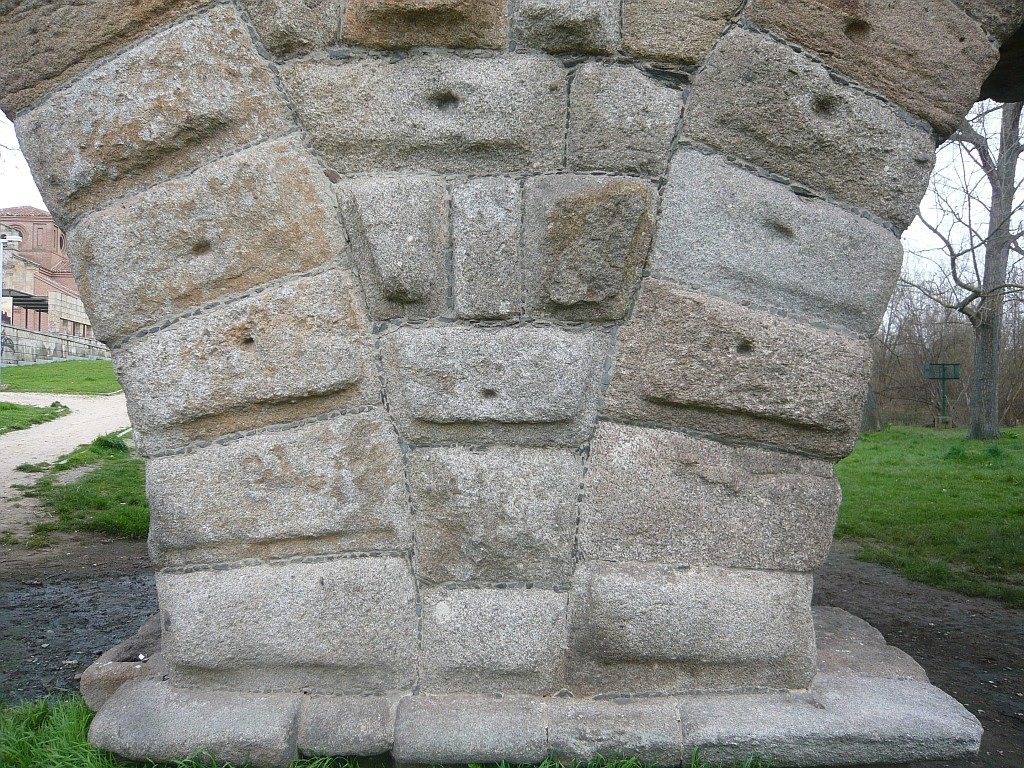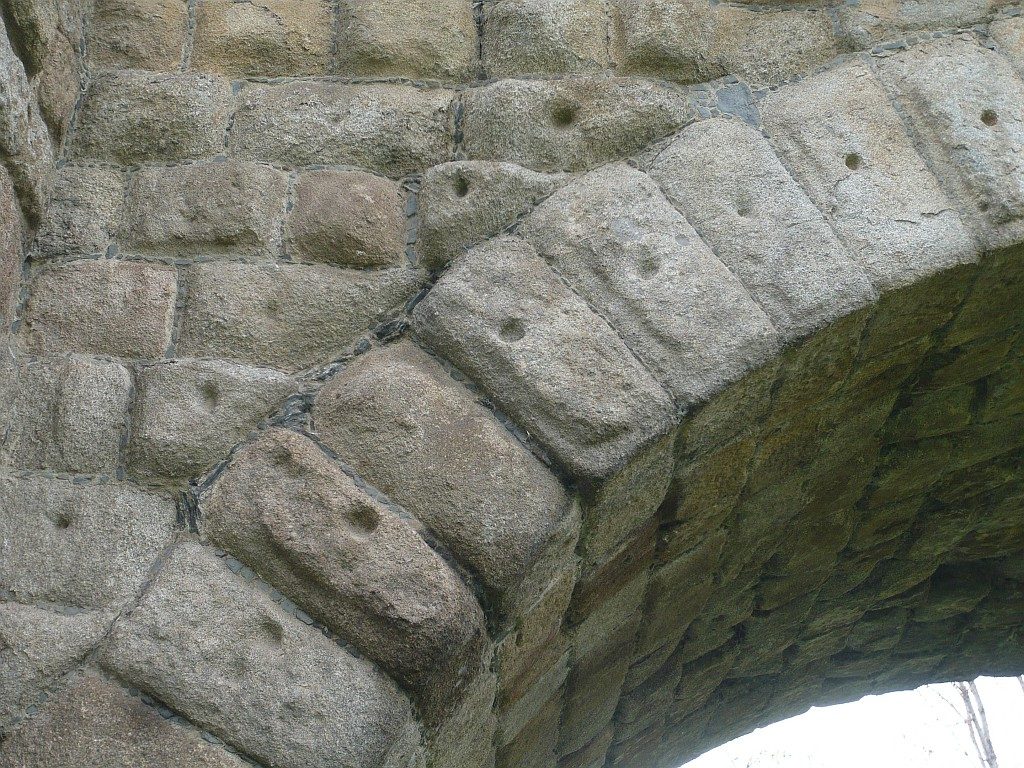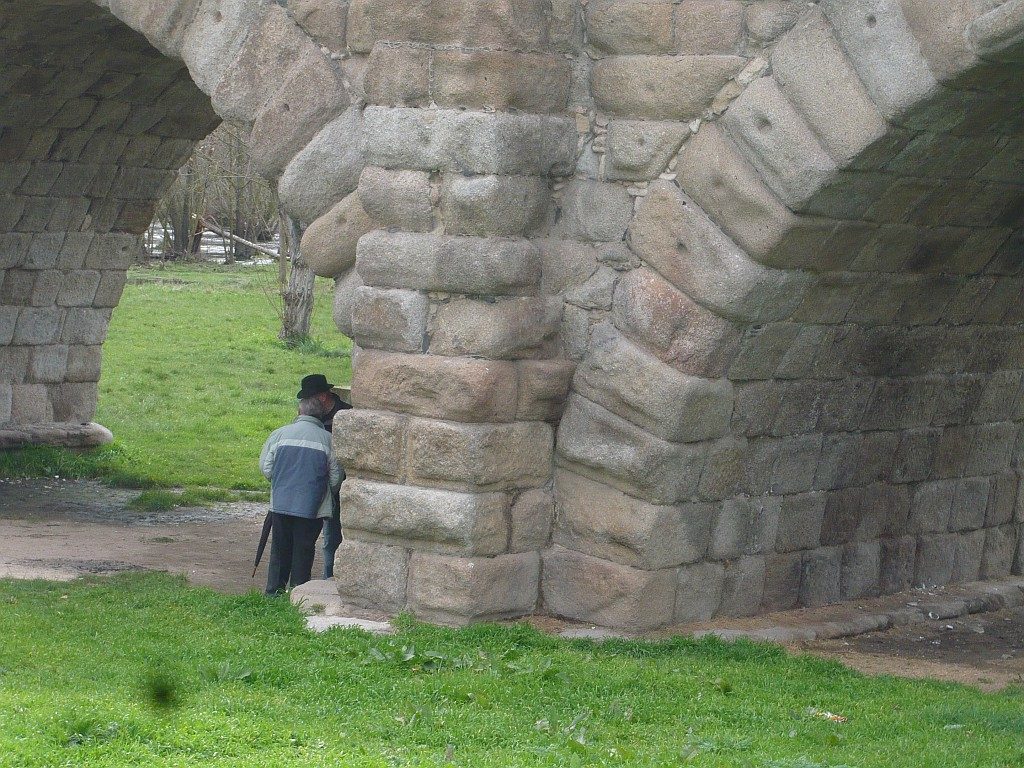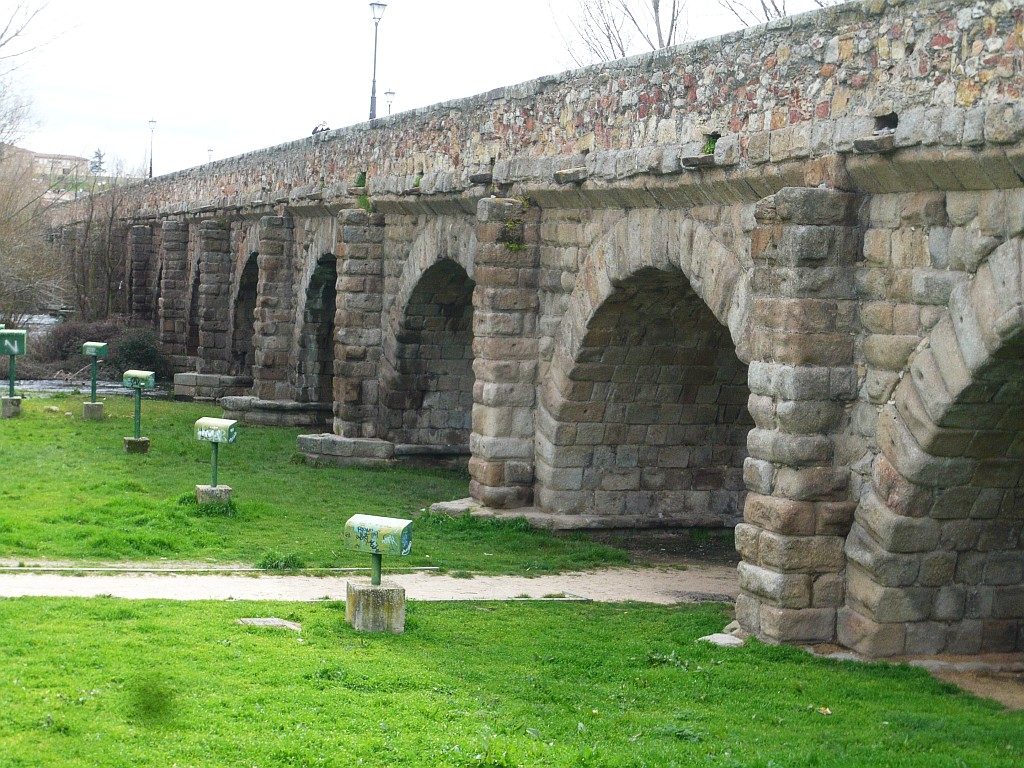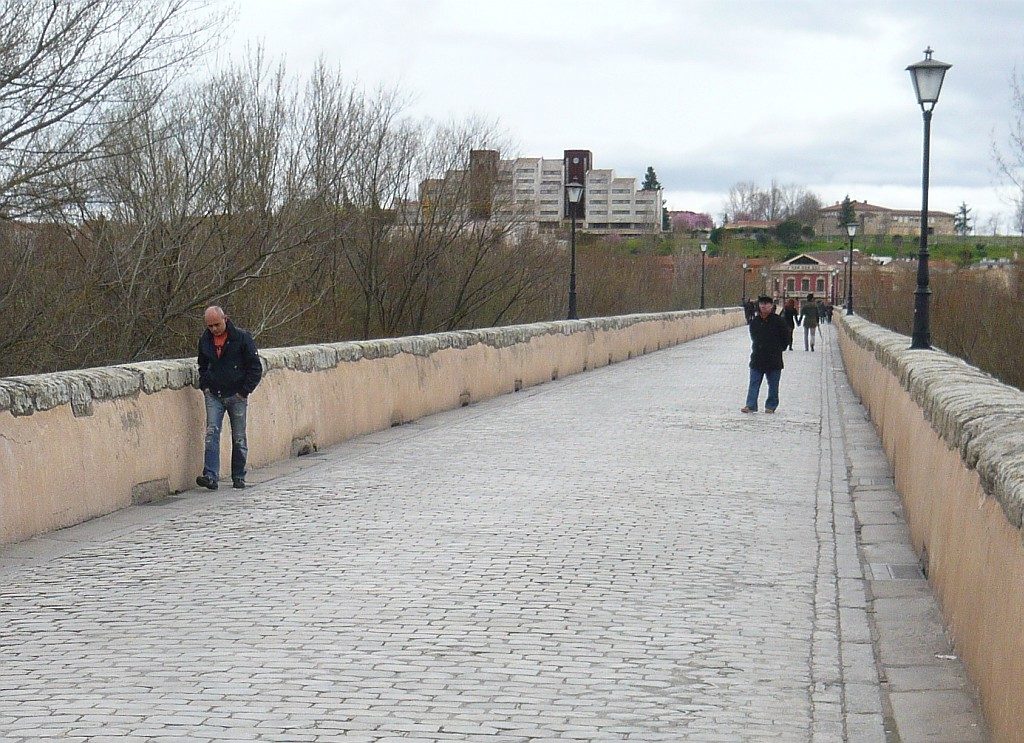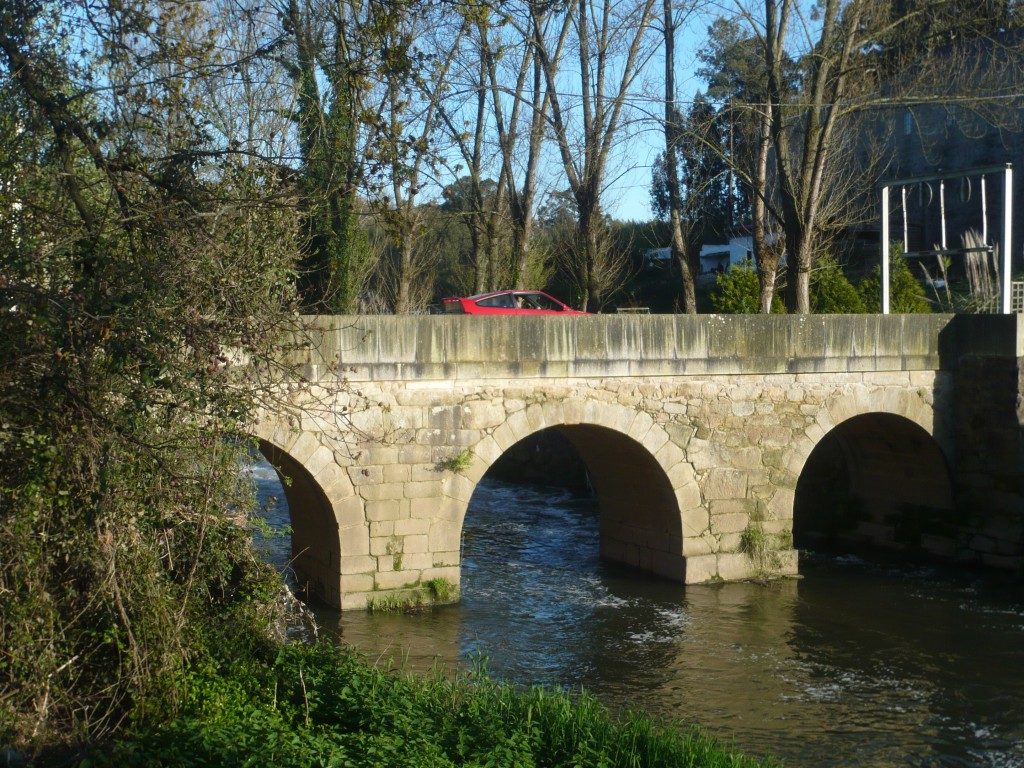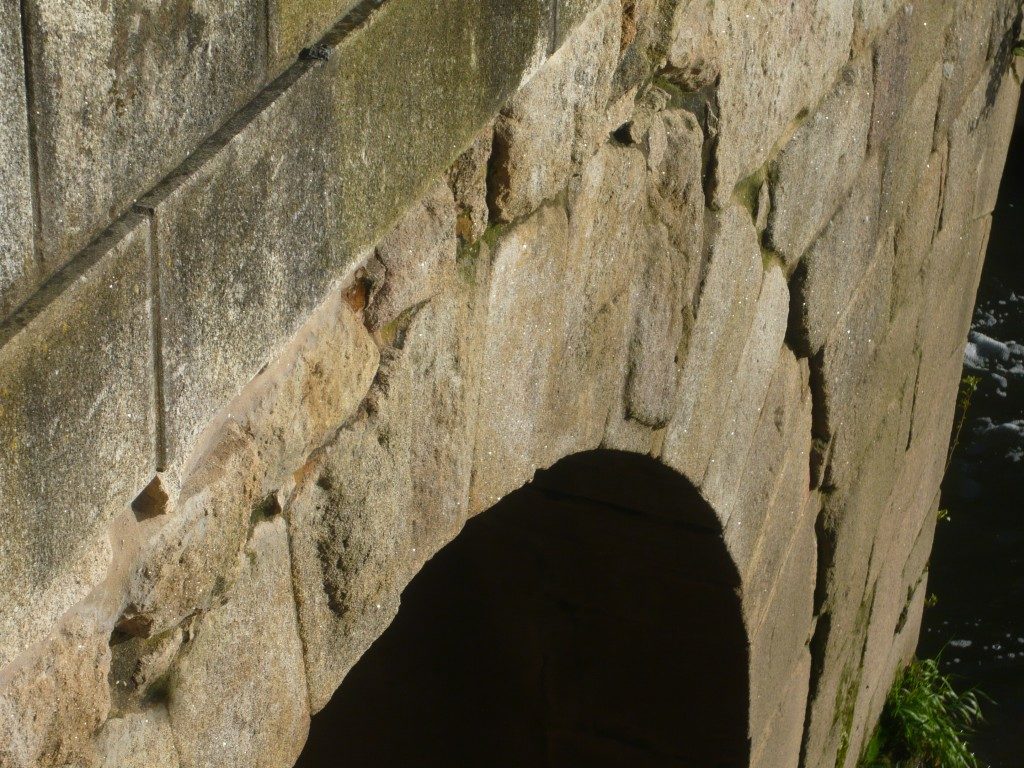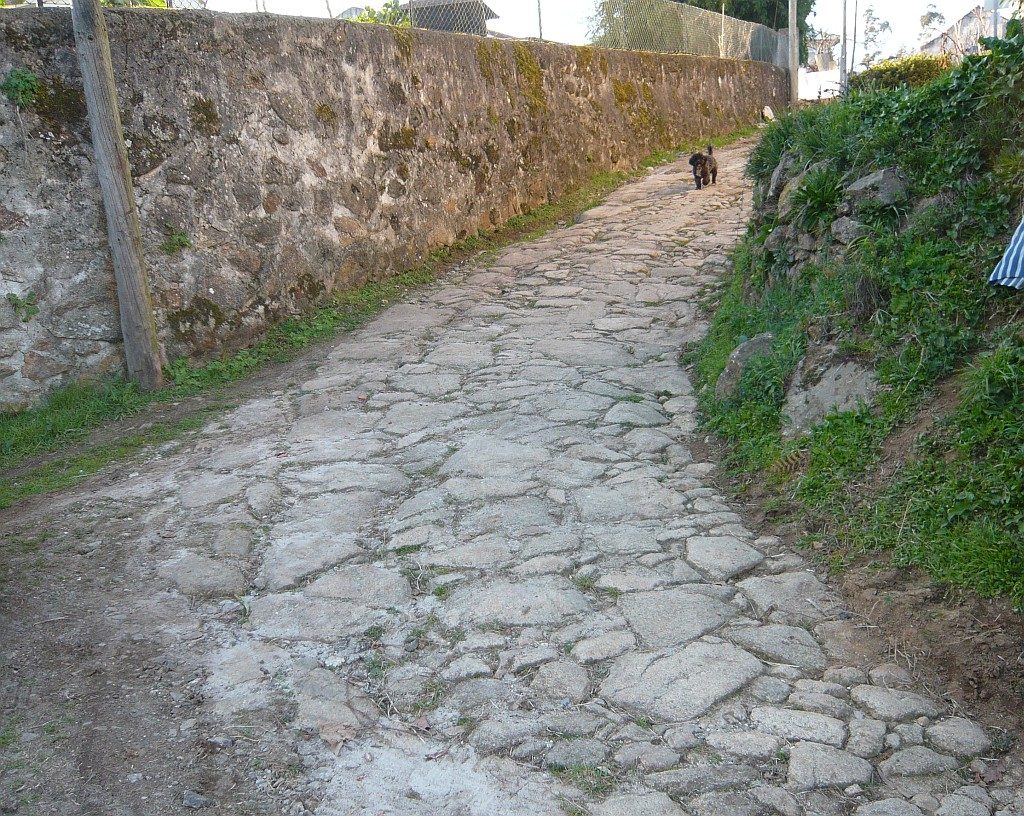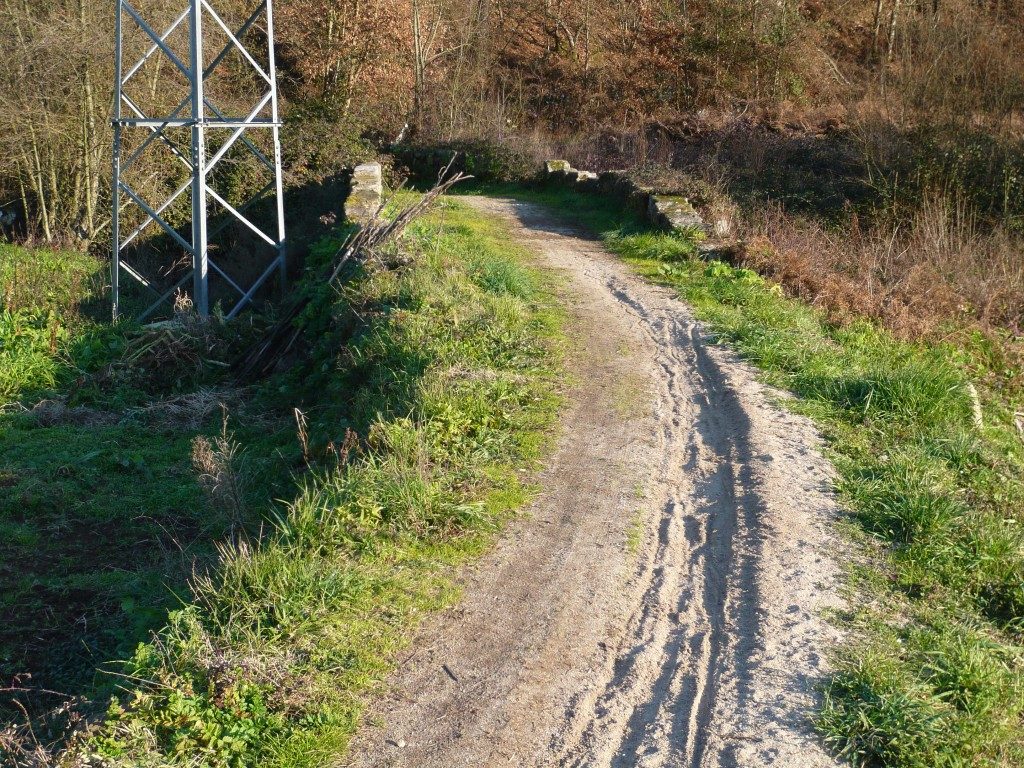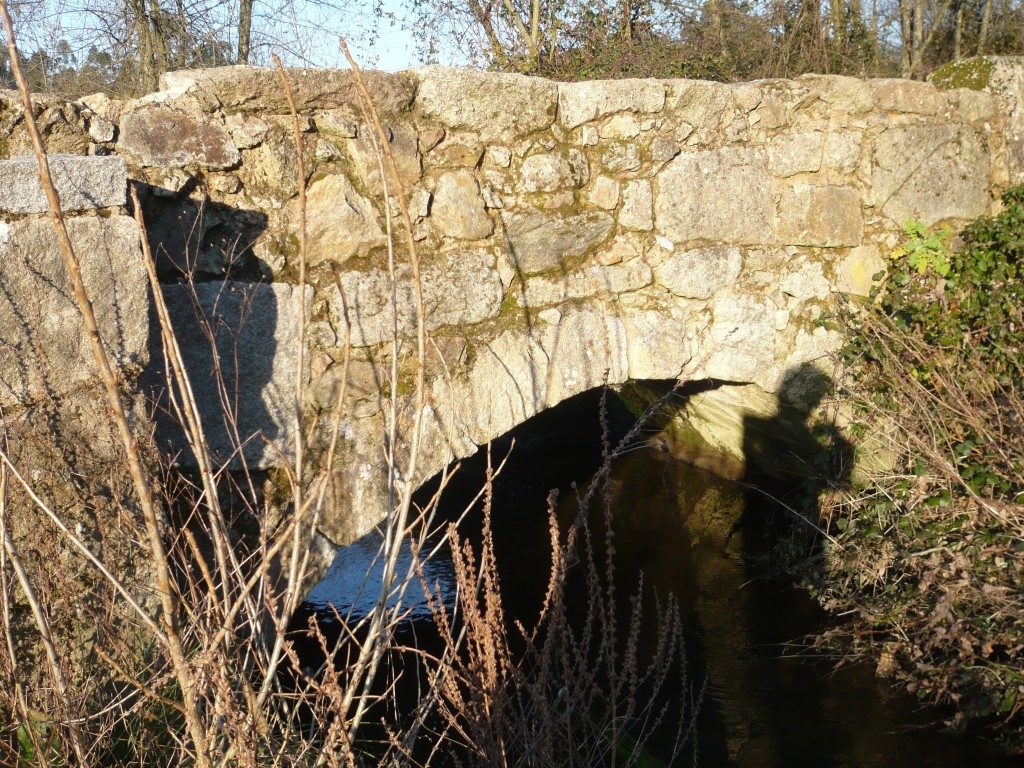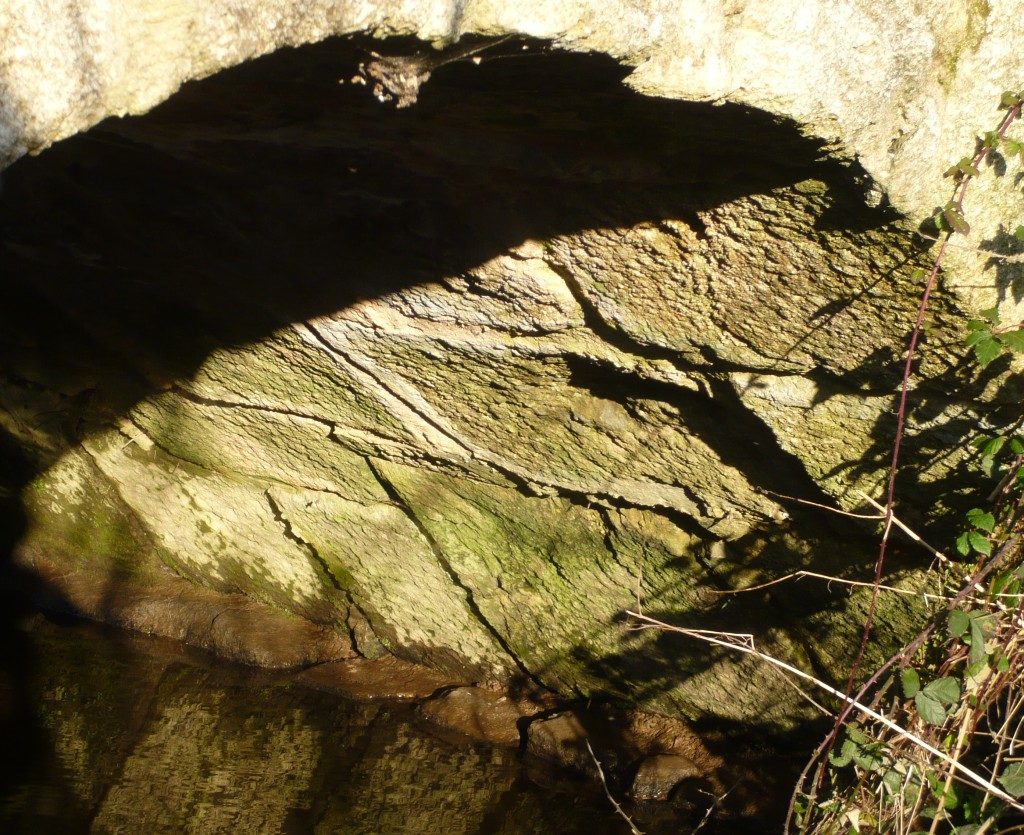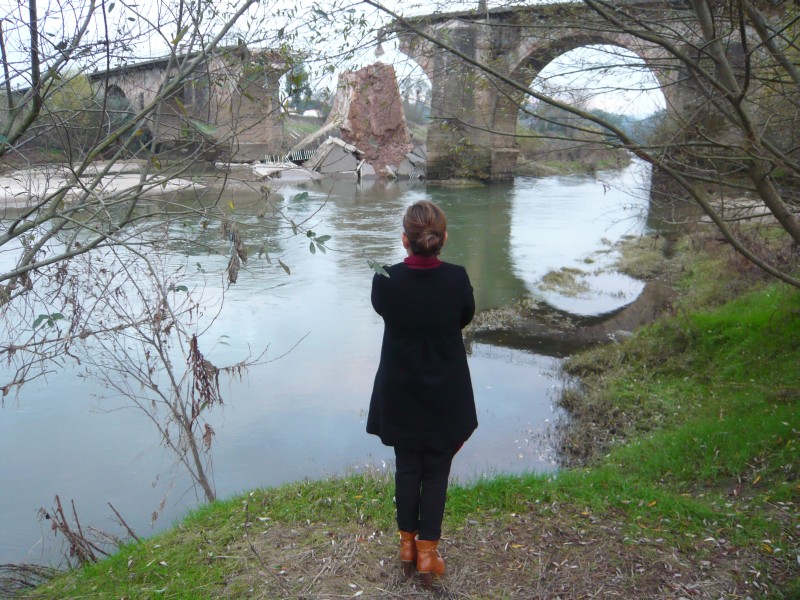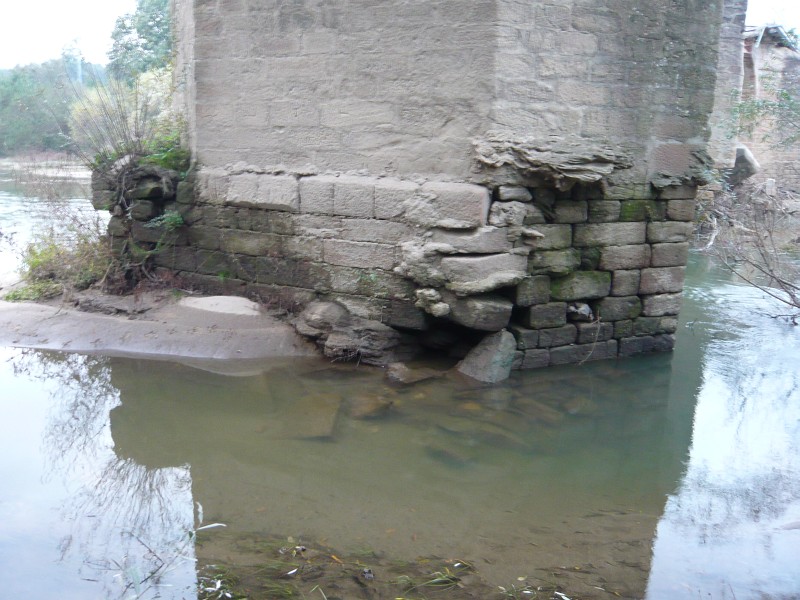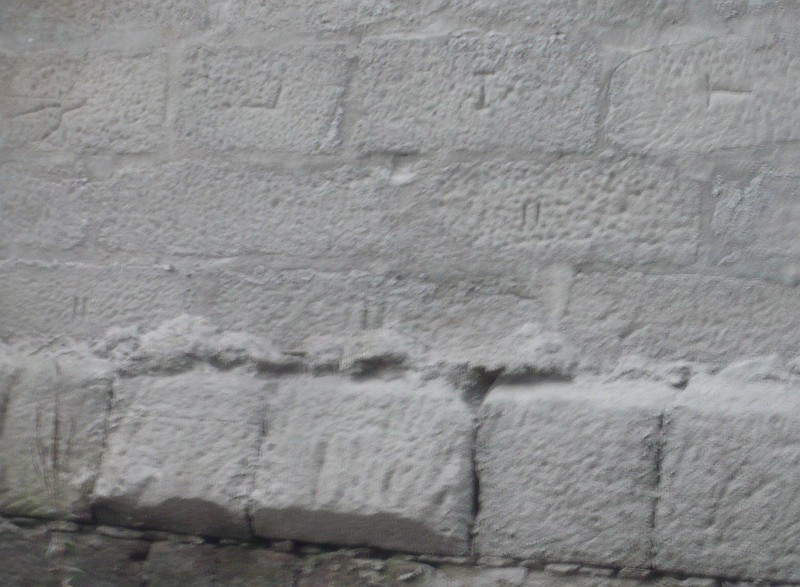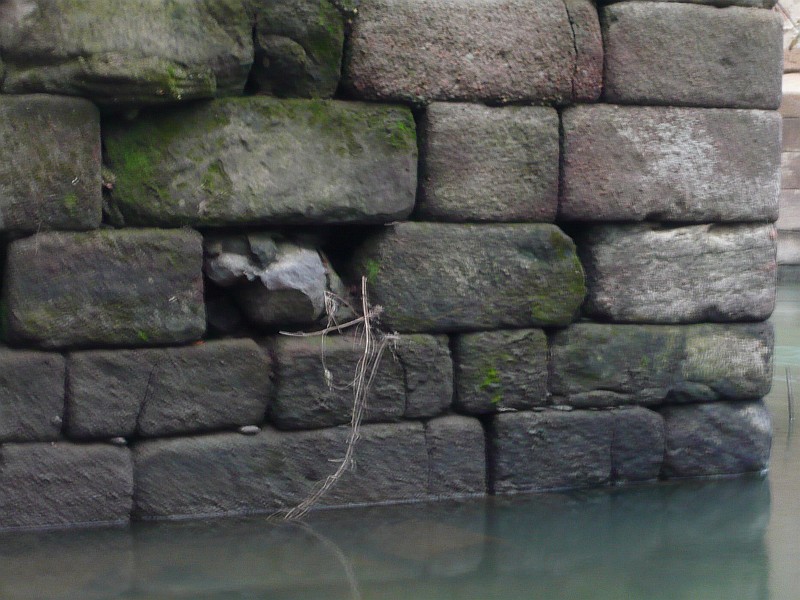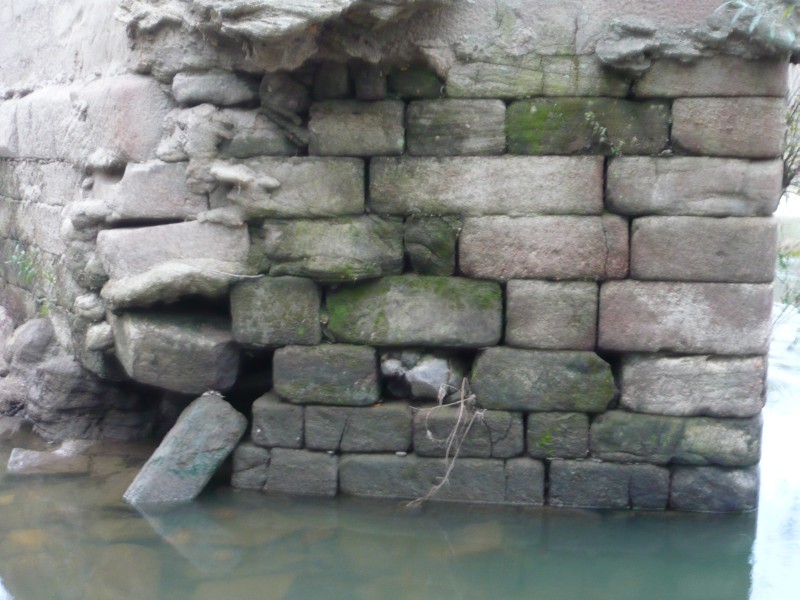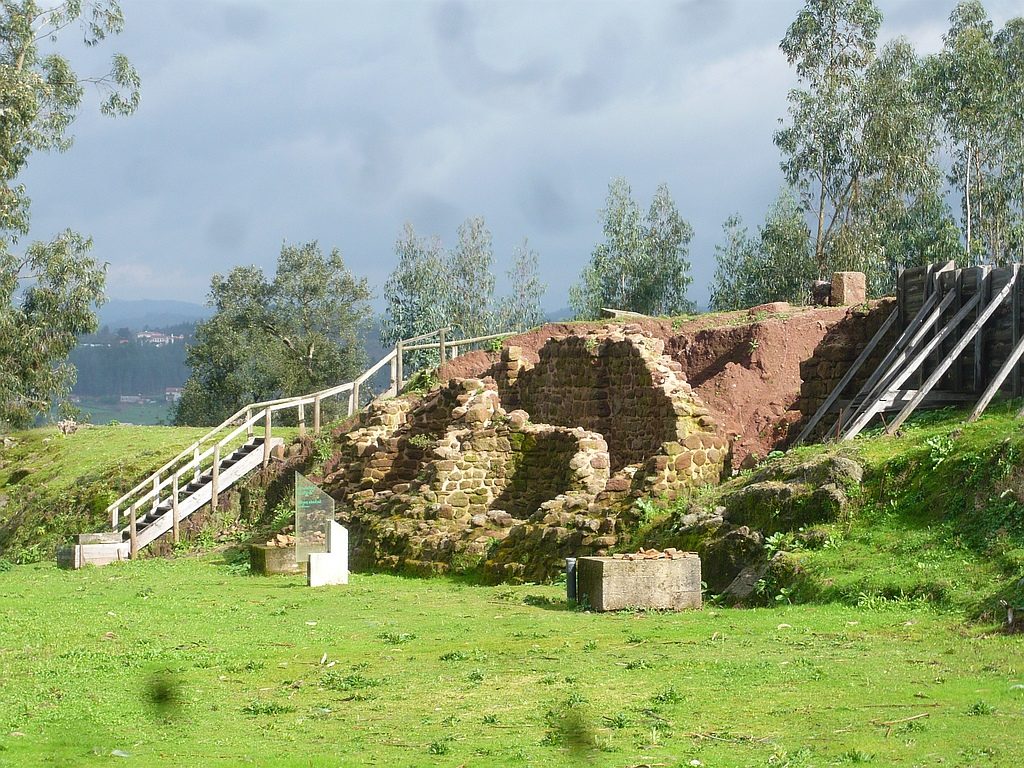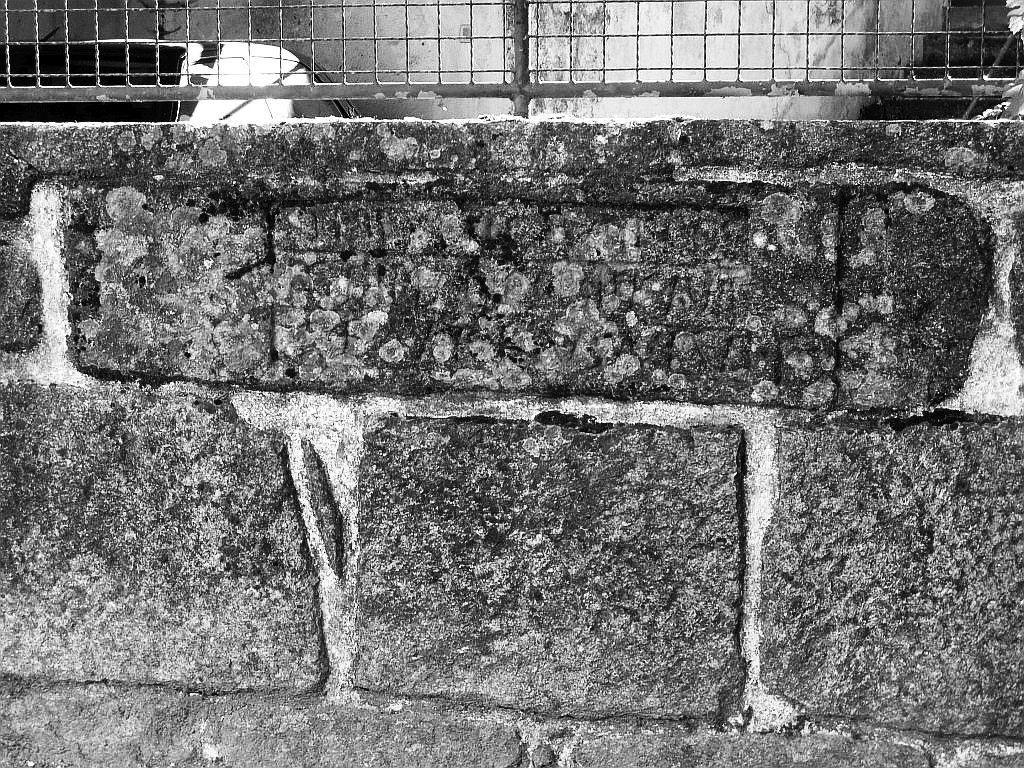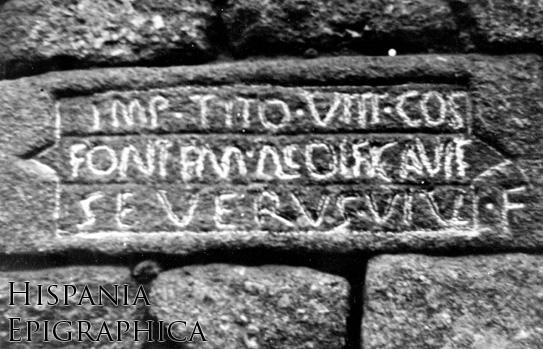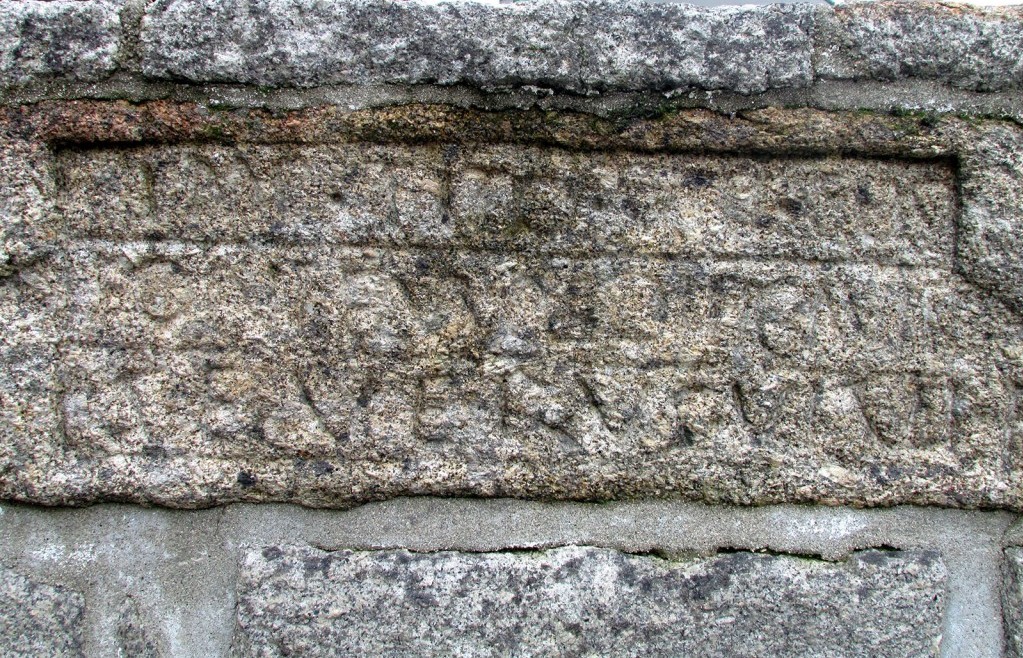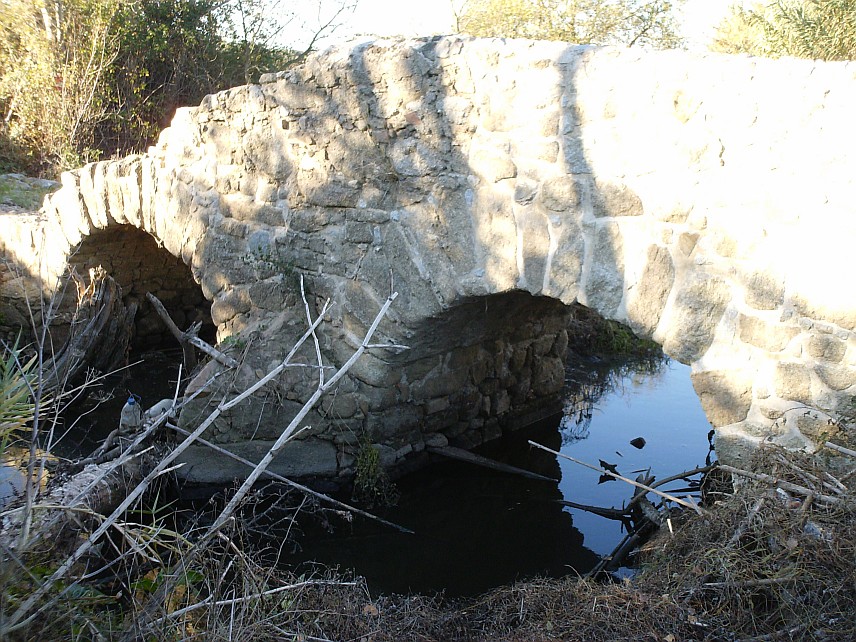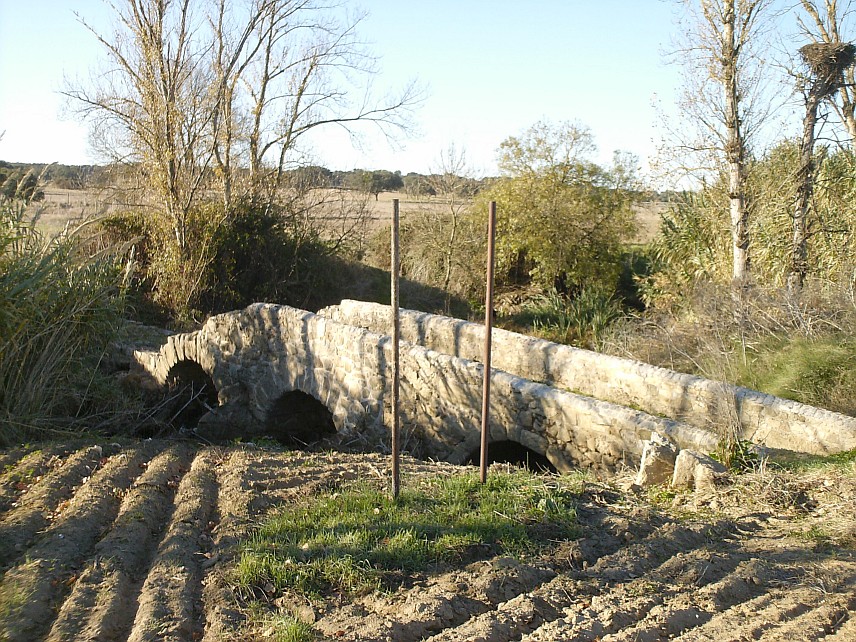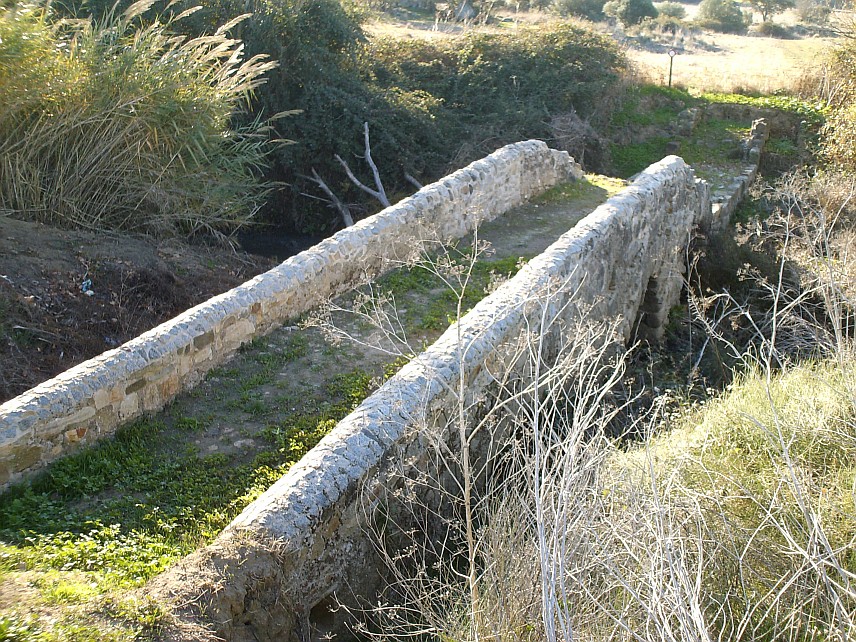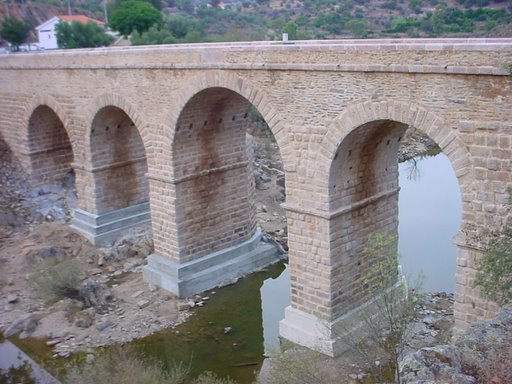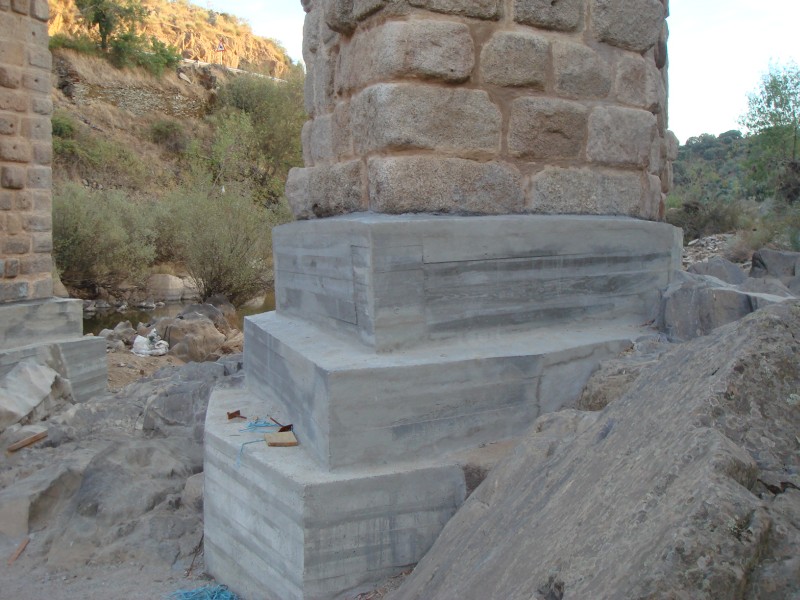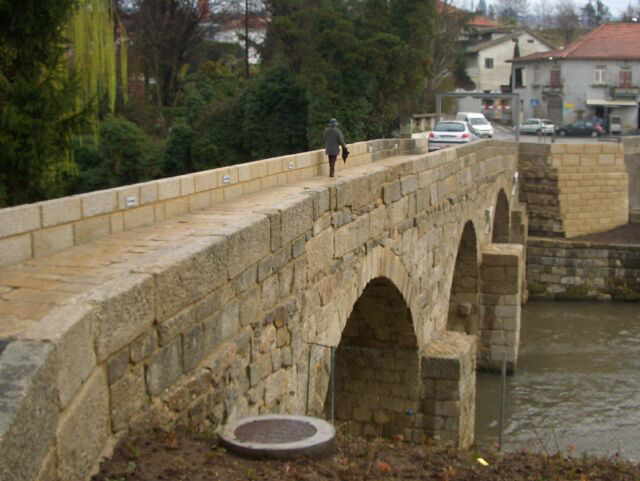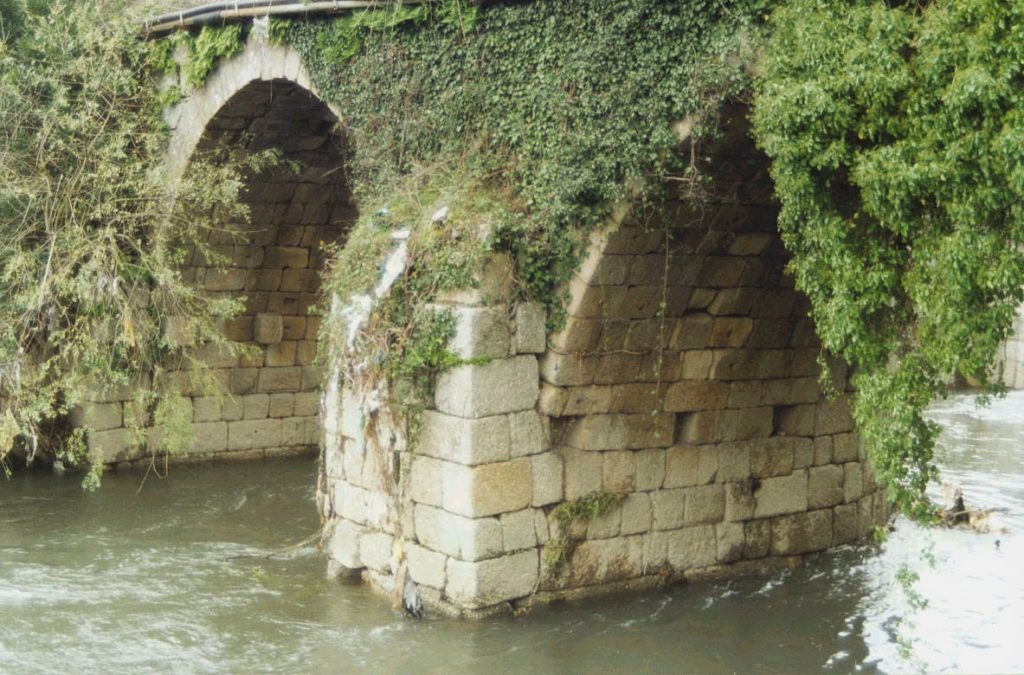(Originally published on September 13, 2013)
Some pictures recently taken of this monumental structure with 26 arches of which only the 15 date from Roman times. Salamanca’s Roman Bridge is one of the best preserved in the Iberian Peninsula. It was built in the first century AD and integrated the famous route between Emerita and Asturica, commonly known as «Via de la Plata». The monument highlights all the principles of Roman engineering for bridge construction, such as modularity; it’s 6 m wide allowing two-way traffic; holes on the borders allowed rainwater to flow out of the bridge. The ashlars have the typical forfex marks, demonstrating the use of mechanical tools for their positioning of the granite which by way was extracted 75 km from here (!), in the quarries of «Los Santos» close to Béjar.
